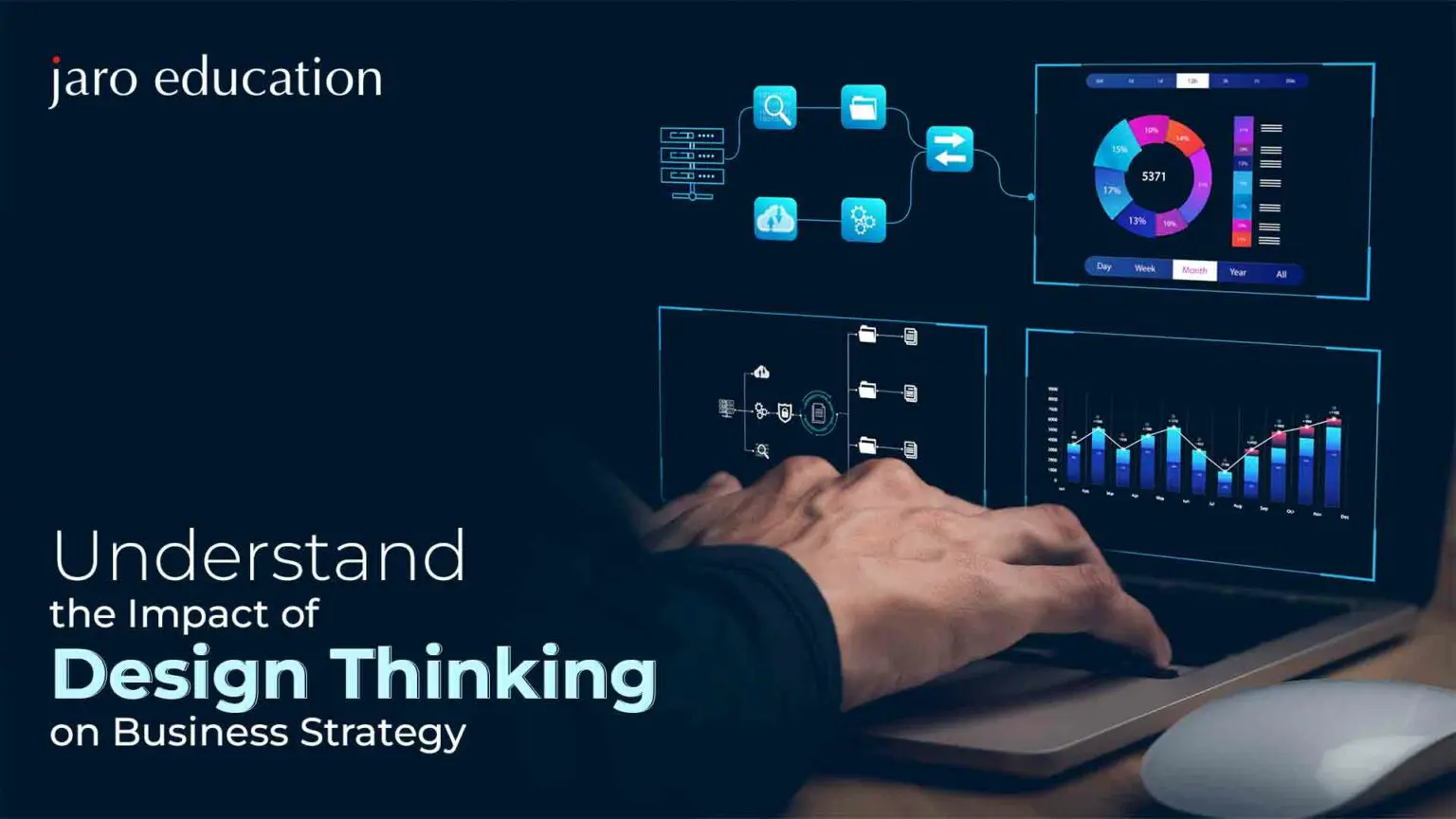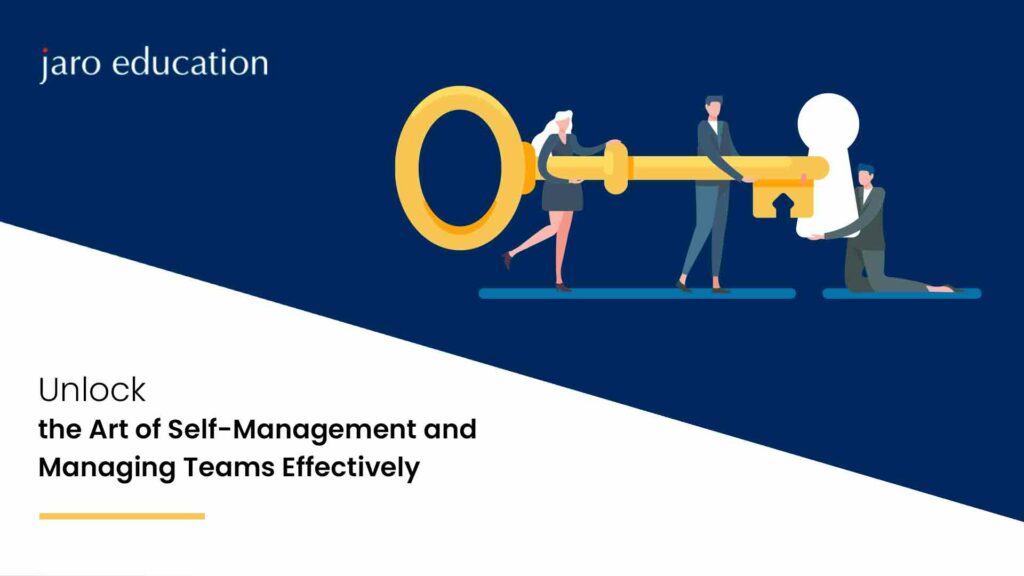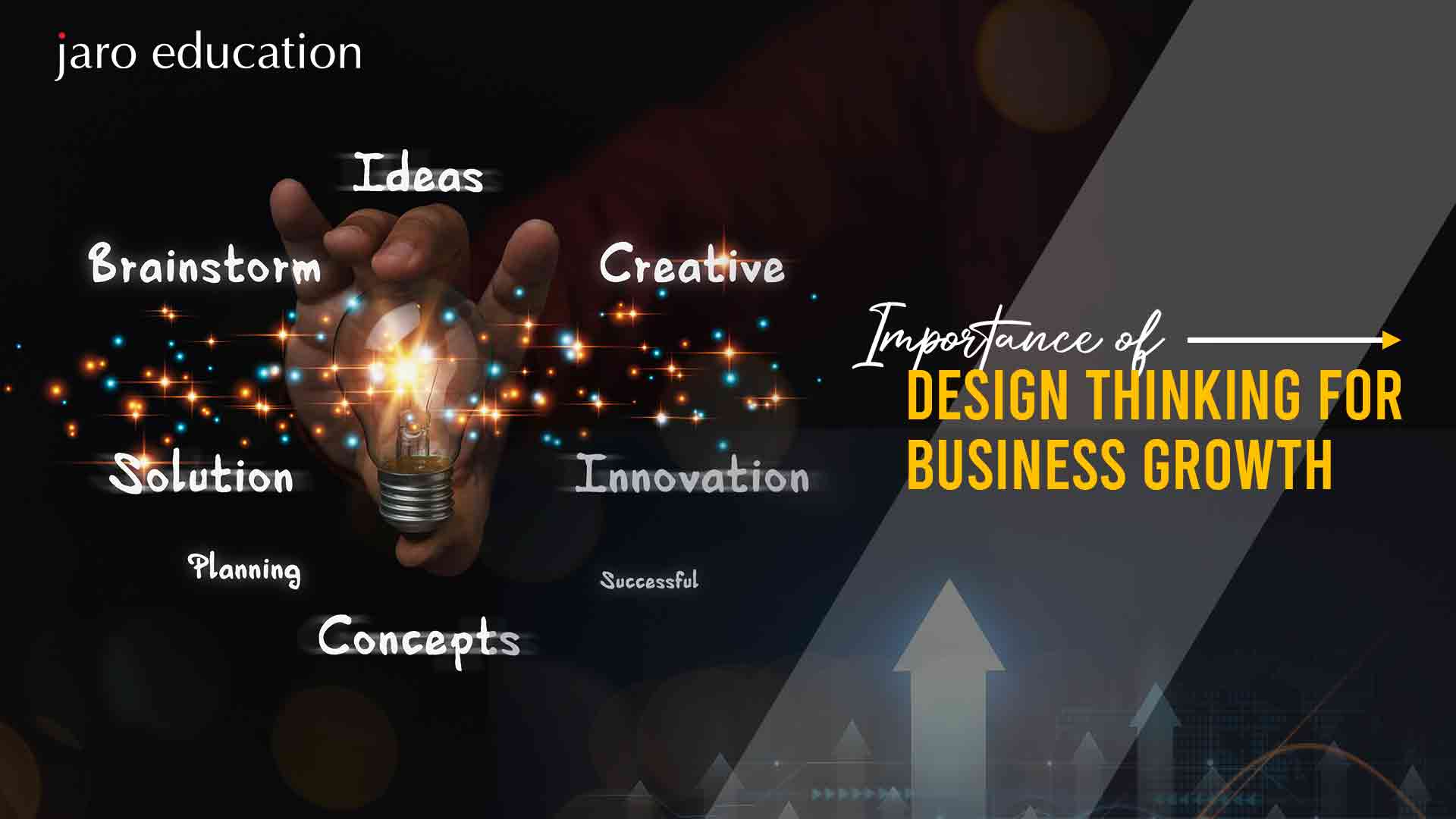Understand the Impact of Design Thinking on Business Strategy
Table of Contents

- jaro education
- 20, July 2023
- 2:55 am
Design thinking has emerged as a recognised competitive advantage for businesses, emphasising the need to adopt a holistic and user-centric approach throughout the organisation.
It has emerged as a powerful methodology that can revolutionise business strategy by placing the customer at the centre of the decision-making process. By understanding the impact of design thinking business strategy, companies can unlock new opportunities, foster innovation, and drive growth.
For students aspiring to build a career in this exciting field, the Executive Programme in Product Innovation & Design Thinking for Business Growth offered by CEP, IIT Delhi can provide invaluable knowledge and skills. This programme equips participants with a comprehensive understanding of design thinking principles and techniques, enabling them to navigate complex business challenges and create impactful solutions.
Design Thinking: An Overview
Design thinking is a problem-solving approach that puts human needs and experiences at the forefront. It is a systematic and iterative process that involves empathising with users, defining the problem and generating creative ideas. Further, it includes prototyping solutions and testing them to arrive at innovative and effective outcomes. The design thinking process typically consists of the following stages:
Empathise
Understanding the needs, motivations, and challenges of the users through observation, interviews, and immersion in their experiences.
Define
Defining the problem or opportunity based on the insights gained during the empathise stage. This involves framing the problem statement in a way that focuses on the user’s perspective.
Ideate
Generating a wide range of creative ideas and potential solutions without judgement or constraint. Brainstorming techniques and collaborative approaches are often employed to encourage diverse thinking.
Prototype
Developing tangible representations or prototypes of the potential solutions. These can be low-fidelity or high-fidelity prototypes, depending on the stage of the design process, and are used to gather feedback and iterate.
Test
Gathering feedback and testing the prototypes with the intended users. This iterative feedback loop helps to refine and improve the solutions based on user insights.

Integration of Design Thinking in Business
Implementing design thinking is a transformative journey that involves continuous learning and exploration. It encompasses both a mindset and a set of actions. Every strategic decision-making process is, in essence, a design process.
- To begin, it is essential to learn from experienced design thinkers and practitioners, adopting their techniques and approaches.
- Look for opportunities to enhance the quality and value of your offerings.
- Building creative confidence can be achieved through small-scale experiments, such as redesigning team meetings or challenging assumptions.
Coaching and facilitating creativity, co-creation, and collaboration are vital for fostering an environment that encourages conceptual risk-taking. Throughout the process, it is crucial to maintain a user-centred focus, continually seeking insights, reframing problems, and generating innovative ideas.
Embracing multiple perspectives, viewing constraints as opportunities, and questioning assumptions all contribute to a successful implementation of design thinking.
Strategies for Successful Integration of Design Thinking in Business
Design thinking offers valuable strategies for businesses to enhance their operations and drive innovation by prioritising customer needs.
Cultivate Empathy
By deeply understanding customers’ needs and pain points, businesses can develop products and services that truly meet their requirements. This involves conducting thorough research, engaging in observation, and incorporating user testing to gain valuable insights.
Nurture a Creative Culture
Encouraging creativity within the organisation can lead to fresh and innovative solutions. This can be achieved by establishing an open and collaborative work environment, promoting brainstorming and idea generation, and acknowledging and rewarding creativity.
Employ Visualisations and Prototypes
Visualising ideas and creating prototypes enable businesses to swiftly and effectively test and refine their solutions. This iterative approach allows for rapid improvement and problem-solving.
Foster Cross-Team Collaboration
Design thinking emphasises the importance of breaking down silos and encouraging collaboration across teams and departments. By embracing a holistic approach to problem-solving, businesses can develop more effective and comprehensive solutions.
Pursue Continuous Improvement
Design thinking is an ongoing process that promotes continuous improvement. By consistently refining and enhancing solutions, businesses can stay ahead of the competition and maintain their competitive edge.
By implementing these strategies, businesses can leverage design thinking principles to optimise their operations, foster innovation, and deliver exceptional value to their customers.
The Transformative Influence of Design Thinking on Business Strategy
Design Thinking’s popularity surged after successful implementation by leading companies like Google, Apple, and Airbnb. Its emphasis on understanding the end user’s perspective and mindset has made it applicable in diverse sectors. It has been employed in healthcare to enhance the experience of children during MR scans, self-improvement for mapping paths to better health, and in various fields like education, finance, journalism, retail, and transportation. Let us analyse its significant impact on business strategy.
Increased Customer Satisfaction
By addressing customer pain points, businesses can enhance customer satisfaction and loyalty.
Understanding Customer Needs
Design thinking focuses on the end-user and their requirements, leading to products and services that better meet customer needs.
Revenue Growth
Customer-centric solutions driven by design thinking can contribute to increased revenue through repeat business and positive word-of-mouth.
Embracing Creativity and Iteration
It encourages a creative and iterative approach to problem-solving, fostering innovation.
Addressing Unmet Needs
By identifying unmet customer needs and emerging market trends, businesses can develop new products and services to drive growth.
Competitive Advantage
Staying ahead of the competition through design thinking enables businesses to maintain a competitive edge in the market.
Cost Reduction and Profitability
Design thinking helps businesses identify and eliminate inefficiencies, reducing costs and increasing profitability.
Process Improvement
By improving processes through design thinking, businesses can streamline their operations and enhance efficiency.
Attracting Top Talent
A culture of innovation and creativity fostered by design thinking can help businesses attract and retain talented individuals.
Competitive Advantage in the Job Market
In today’s competitive job market, businesses with a strong focus on design thinking can stand out as employers of choice.
Practical Advantages of Design Thinking in Business Strategy
Design thinking business strategy offers several practical advantages when incorporated into business strategy:
Fostered Collaborative Solutions
Collaboration is a key aspect of design thinking strategy. It promotes seeking inspiration from various sources and engaging the whole team for feedback and ideas. By encouraging collaboration, design thinking enables businesses to tackle challenges from different angles and develop innovative solutions. This approach encourages teams to look beyond their own expertise, leading to strategic innovation throughout the company.
Customer-Centric Approach
By placing the customer at the centre of decision-making, design thinking helps businesses gain a deep understanding of customer needs and preferences. This customer-centric approach results in the development of products, services, and experiences that resonate with the target audience, leading to improved customer satisfaction and loyalty.
Increased Innovation and Creativity
Design thinking encourages a culture of creativity, curiosity, and experimentation within organisations. By embracing diverse perspectives, encouraging brainstorming, and promoting open-mindedness, businesses can generate more innovative ideas and drive continuous improvement in their offerings.
Agile Iteration and Adaptation
The iterative nature of design thinking allows businesses to quickly prototype, test, and refine their solutions. This agile approach enables organisations to adapt to evolving market dynamics and customer feedback, minimising the risk of launching products or services that do not meet customer expectations.
Competitive Advantage and Market Differentiation
By integrating design thinking into business strategy, companies can differentiate themselves from competitors. The emphasis on user experience, innovation, and customer-centricity enables businesses to create unique and compelling value propositions, establishing a competitive advantage in the market.
Challenges and Limitations of Implementing Design Thinking
H3
These are the common challenges you may encounter during the implementation of the design thinking process.
Cultural Resistance
Implementing design thinking may face resistance within organisations due to existing hierarchical structures, resistance to change, or a lack of understanding of its principles. Overcoming these cultural barriers requires strong leadership and effective change management strategies.
Resource Constraints
Design thinking often requires dedicated time, resources, and cross-functional collaboration. Limited resources, budget constraints, and time pressures can pose challenges in fully embracing and implementing design thinking practices.
Integration with Existing Processes
Integrating design thinking into established business processes and workflows can be challenging. It may require aligning with existing frameworks and finding ways to seamlessly integrate design thinking methodologies.
Measurement of Impact
Measuring the impact and return on investment of design thinking initiatives can be complex. Traditional metrics may not capture the full scope of the benefits, like improved customer satisfaction or innovative solutions, making it challenging to demonstrate the value of design thinking to stakeholders.
Scaling and Sustaining
Scaling design thinking across an organisation can be challenging. Maintaining consistency and ensuring ongoing commitment to the principles and practices of design thinking requires continuous effort, training, and reinforcement.
Bottom Line
Despite these challenges and limitations, organisations can address them through proper training, leadership support, and a commitment to fostering a design-thinking culture. Overcoming these obstacles can unlock the potential of design thinking and lead to innovative solutions, improved user experiences, and long-term business success.
The Executive Programme in Product Innovation & Design Thinking for Business Growth offered by CEP, IIT Delhi equips students with the knowledge and skills to understand the impact of design thinking on business strategy. Registering for this programme via Jaro Education enables students and working professionals to develop innovative ideas for products and services and provides them with theoretical and applied insights to effectively navigate the process of new product development.











